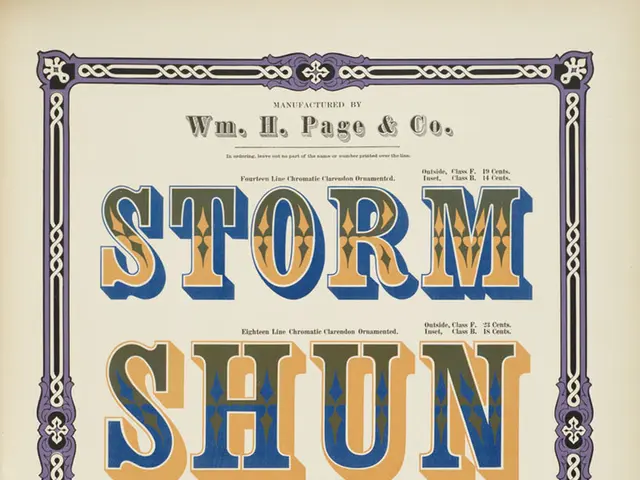Transforming Eternity's Heart: Ancient Romans Altered and Adapted to a Fluid River Landscape
Boldly Adapting to the Eternal City's Riverine Challenges
In this raucous, straight-shooting exploration, we dive deep into the fascinating story of Rome's co-evolution with its ever-changing river, the Tiber. With gritty insight and a dash of academic flair, Dr. Andrea L. Brock, a boundary-breaking classicist from the University of St. Andrews, takes us on a wild ride through the ancient city’s struggles, triumphs, and adaptations in its flood-prone, dynamic river valley.
In this riveting incline, we'll cover:
- Ancient Rome's strategic riverine settlement: Explore how Rome's rich natural resources and strategic riverine location set the stage for its growth, laying the foundation for one of history's most enduring civilizations.
- Harnessing the wild Tiber River: Discover how the Romans sought to bend the Tiber to their will, from targeted flood prevention measures to engineering marvels like the infamous Cloaca Maxima.
- Resilience in the face of adversity: Uncover how Rome's early inhabitants persevered in the face of ecological challenges, continuously adapting and innovating to cope with floods, erosion, and a changing riverine landscape.
- Modern parallels: Ponder the implications of Rome's historical resilience for contemporary city planners and environmental policymakers, as they grapple with the challenges of climate change, sea-level rise, and flooding.
Strap in, my friends, as we blaze a trail through the annals of history—proof positive that even the most daunting challenges can be overcome with grit, ingenuity, and the indomitable spirit of humanity!
Introduction: Embracing Rome's Riverine Legacy
It ain't all smooth sailing when you've got a stubborn river on your hands. Rome's early inhabitants found that out the hard way, but they didn't let a little thing like a figurative fight against the current hold them back. In this exploration, we'll dive headfirst into the story of Rome's riverine relationship, one filled with flooding, resilience, and the can-do spirit that still defines the eternal city today.
The Captivating Lure of the Tiber RiverRome: a storied metropolis that's seen its share of triumphs and trials, powered by the mighty Tiber River. But what was it about this particular river that made it such an irresistible magnet for the earliest settlers? That's a question we'll answer while diving into the wealth of archaeological and historical evidence that's shed light on Rome's urban development in its river valley.
What's in a Setting?As it turns out, Rome’s riverine location was nothing short of a gold mine for inhabitants in the pre-urban era. Imagine a landscape shaped by the forces of volcanic eruptions and fluvial action, with towering hills and low-lying valleys that offered plenty of opportunities. From the defensive positions of the hills and valuable natural resources, such as salt and clay, to the navigable harbor and ford at a confluence of tributary streams, Rome's unique river valley setting delivered both wealth and opportunity for human habitation.
The Birth of the Eternal City: An Uphill BattleIn those early days, when the Tiber River was still Rome's closest companion, floods were nothing out of the ordinary. When the river overflowed its banks,, the hills provided safe refuge for the inhabitants as they disbanded their valley activities, awaiting the waters' receding tides. However, as Rome began to urbanize, scaling the river valley, the stakes got higher. The dynamic river and the city's growth would soon demand even greater adaptations from the inhabitants.
Early Adaptive StrategiesIn order to build in their flood-prone lowlands, Rome's ancestors dug deep and employed impressive landscape modification projects and flood mitigation measures. By moving large amounts of sediment to reclaim land from the floodplain, building strategic infrastructure, and implementing river management strategies, the city was able to cope with its volatile river and continue growing.
A Living TestimonyThe story of Rome's relationship with its river underscores the eternal co-evolution of society and environment. As a reminder of the struggles, adaptations, and innovations that have borne the eternal city's fruit for millennia, we can look to its resilient riverine legacy for inspiration as we face our current sustainability challenges. From addressing climate change to responding to the myriad consequences of urban growth, understanding our past might just be the key to crafting a sustainable future.
Endnotes:
[1] Luce, T. J. (1963). The position of the Roman Forum in the city of Rome: A Problem in Urban Topography and Planning. Antiquity, 37(137), 117–130. https://doi.org/10.1017/S0003598X00091690[2] Carandini, A. (2003). The Eternal City: A History of Rome. University of California Press. https://www.ucpress.edu/book/9780520221826/the-eternal-city[3] Coarelli, F. (2013). The Aqueducts of Ancient Rome. Harvard University Press. https://www.hup.harvard.edu/catalog.php?isbn=9780674064880[4] Ward-Perkins, J. (2005). Rome the Cosmopolis: A Political History of the Ancient City. Temple University Press. https://www.temple.edu/tempress/book/9781592133449
Urban planning and environmental history come together in this exploration of Rome's co-evolution with the Tiber River, shedding light on the city's strategic riverine settlement and early adaptive strategies. This fascinating story offers valuable insights for contemporary city planners and environmental policymakers, as they navigate challenges such as climate-change, sea-level rise, and flooding.
Science and education play key roles in understanding Rome's riverine legacy, as we delve into the archaeological and historical evidence that illuminates the city's urban development in its dynamic river valley. By learning from the past, we can foster environmental-science and education-and-self-development, paving the way for a sustainable future.
As we embark on this exploration, we recognize the importance of the Tiber River in shaping Rome's rich environmental and human history. From its natural resources and navigable harbor to the challenges presented by flooding and changing riverine landscapes, the Tiber's story resonates with the ongoing conversations around climate-change and urban adaptation today.








